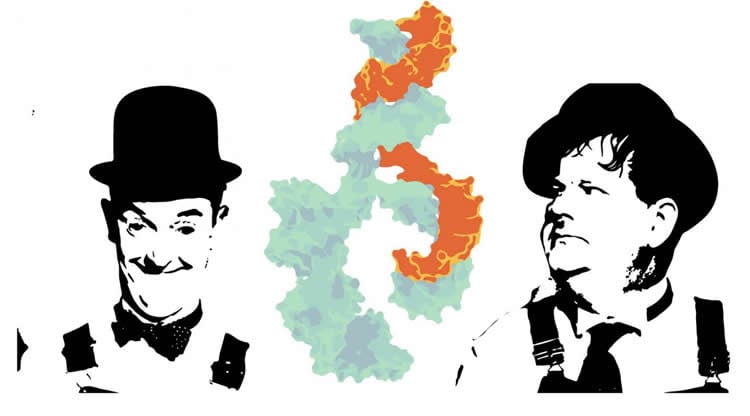Summary: Researchers revealed the molecular elements that bridge anxiety and metabolism.
Source: Hebrew University of Jerusalem.
For the first time — researchers revealed a connection between anxiety and metabolic disorders at the molecular level; the discovery opens new possibilities for detecting and treating both symptoms.
Metabolic and anxiety-related disorders both pose a significant healthcare burden, and are in the spotlight of contemporary research and therapeutic efforts. Although intuitively we assume that these two phenomena overlap, the link has not been proven scientifically.
Now, a team of researchers from the Hebrew University of Jerusalem, headed by Prof. Hermona Soreq from the Edmond and Lily Safra Center for Brain Sciences and the Department of Biological Chemistry at the Faculty of Mathematics and Sciences, revealed the molecular elements that bridge anxiety and metabolism – a type of microRNA that influences shared biological mechanisms.
“We already know that there is a connection between body and mind, between the physical and the emotional, and studies show that psychological trauma affects the activity of many genes. Our previous research found a link between microRNA and stressful situations – stress and anxiety generate an inflammatory response and dramatically increase the expression levels of microRNA regulators of inflammation in both the brain and the gut, for example the situation of patients with Crohn’s disease may get worse under psychological stress, “says Prof. Soreq.
“In the present study, we added obesity to the equation. We revealed that some anxiety-induced microRNA are not only capable of suppressing inflammation but can also potentiate metabolic syndrome-related processes. We also found that their expression level is different in diverse tissues and cells, depending on heredity and exposure to stressful situations,” explains Prof. Soreq.
The family of microRNA genes is part of the human genome, which was considered until not too long ago as “junk-DNA”. However, microRNAs are now known to fulfill an important role in regulating the production process of proteins by other genes. These tiny RNA molecules, which are one percent of the average size of a protein-coding gene, act as suppressors of inflammation and are able to halt the production of proteins.
The research paper, published in the journal Trends in Molecular Medicine, details the evidence linking microRNA pathways, which share regulatory networks in metabolic and anxiety-related conditions. In particular, microRNAs involved in these disorders include regulators of acetylcholine signaling in the nervous system and their accompanying molecular machinery.

Metabolic disorders, such as abdominal obesity and diabetes, have become a global epidemic. In the USA, the prevalence of metabolic syndrome is as high as 35 percent. In other countries, such as Austria, Denmark and Ireland it affects 20-25 percent of the population.
Anxiety disorders are harder to quantify than metabolic ones. They include obsessive-compulsive disorder (OCD), post-traumatic stress disorder (PTSD) and phobia. The full burden of the anxiety spectrum is difficult to assess, due to under-diagnosis and poorly defined pathophysiological processes.
This newly revealed link offers novel opportunities for innovative diagnoses and treatment of both metabolic and anxiety-related phenomena.
“The discovery has a diagnostic value and practical implications, because the activity of microRNAs can be manipulated by DNA-based drugs,” explains Prof. Soreq. “It also offers an opportunity to reclassify ‘healthy’ and ‘unhealthy’ anxiety and metabolic-prone states, and inform putative strategies to treat these disorders.”
Funding: The study was supported by The European Research Council, Legacy Heritage Biomedical Partnership Program of the Israel Science Foundation, The Israeli Ministry of Science.
Source: Avivit Delgoshen – Hebrew University of Jerusalem
Image Source: This NeuroscienceNews.com image is credited to Petra Pollins.
Original Research: Abstract for “MicroRNA Regulators of Anxiety and Metabolic Disorders” by Chanan Meydan, Shani Shenhar-Tsarfaty, and Hermona Soreq in Trends in Molecular Medicine. Published online August 22 2016 doi:10.1016/j.molmed.2016.07.001
[cbtabs][cbtab title=”MLA”]Hebrew University of Jerusalem. “Biological Link Between Stress and Obesity.” NeuroscienceNews. NeuroscienceNews, 5 October 2016.
<https://neurosciencenews.com/obesity-stress-neurobiology-5214/>.[/cbtab][cbtab title=”APA”]Hebrew University of Jerusalem. (2016, October 5). Biological Link Between Stress and Obesity. NeuroscienceNews. Retrieved October 5, 2016 from https://neurosciencenews.com/obesity-stress-neurobiology-5214/[/cbtab][cbtab title=”Chicago”]Hebrew University of Jerusalem. “Biological Link Between Stress and Obesity.” https://neurosciencenews.com/obesity-stress-neurobiology-5214/ (accessed October 5, 2016).[/cbtab][/cbtabs]
Abstract
MicroRNA Regulators of Anxiety and Metabolic Disorders
Anxiety-related and metabolic disorders are under intense research focus. Anxiety-induced microRNAs (miRNAs) are emerging as regulators that are not only capable of suppressing inflammation but can also induce metabolic syndrome-related processes. We summarize here evidence linking miRNA pathways which share regulatory networks in metabolic and anxiety-related conditions. In particular, miRNAs involved in these disorders include regulators of acetylcholine signaling in the nervous system and their accompanying molecular machinery. These have been associated with anxiety-prone states in individuals, while also acting as inflammatory suppressors. In peripheral tissues, altered miRNA pathways can lead to dysregulated metabolism. Common pathways in metabolic and anxiety-related phenomena might offer an opportunity to reclassify ‘healthy’ and ‘unhealthy’, as well as metabolic and anxiety-prone biological states, and inform putative strategies to treat these disorders.
Trends
Anxiety-related and metabolic disorders pose a significant healthcare burden, and are in the spotlight of contemporary research and therapeutic efforts.
miRNAs continue to emerge as molecular elements with diverse regulatory functions. Recent data support a role for miRNAs in clinical scenarios linking anxiety and metabolic disorder-related diseases.
Dually linked miRNAs may bridge anxiety and metabolism by influencing shared biological mechanisms.
miRNAs can influence both metabolic and anxiety-related signaling pathways, and control inflammation, as well as modulating enzymes associated with autonomic nervous system functioning.
This emerging link may offer novel opportunities for innovative diagnoses, follow-up, risk stratification, and management, while cautiously assessing potential off-target effects and risks.
“MicroRNA Regulators of Anxiety and Metabolic Disorders” by Chanan Meydan, Shani Shenhar-Tsarfaty, and Hermona Soreq in Trends in Molecular Medicine. Published online August 22 2016 doi:10.1016/j.molmed.2016.07.001






